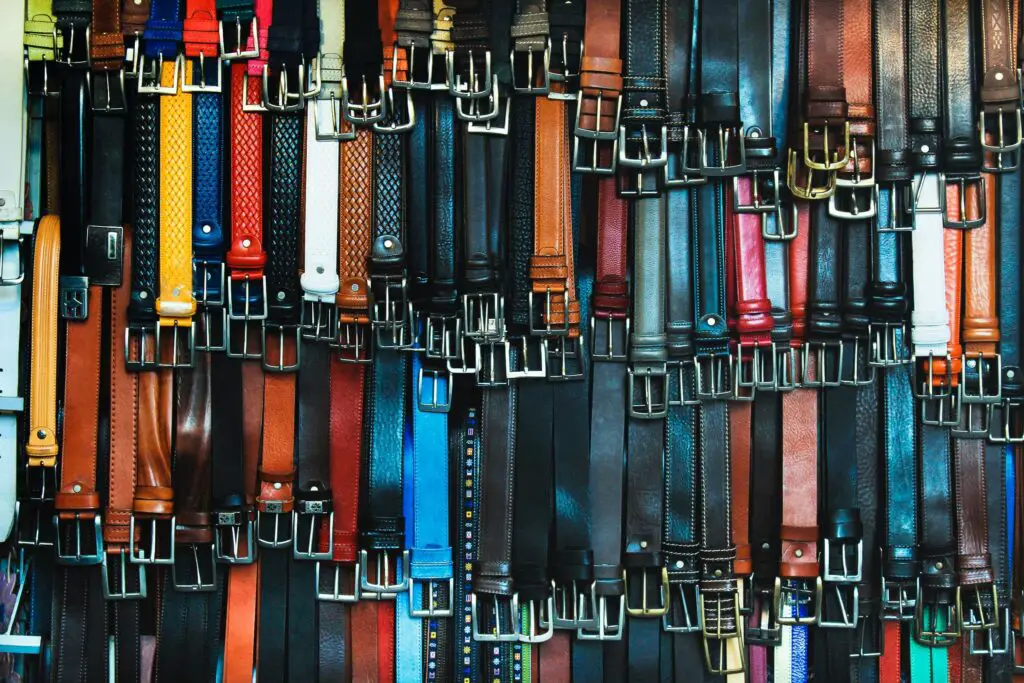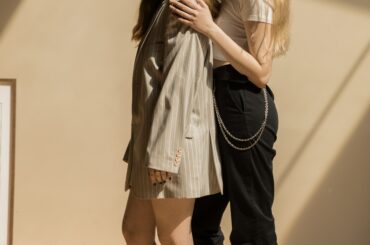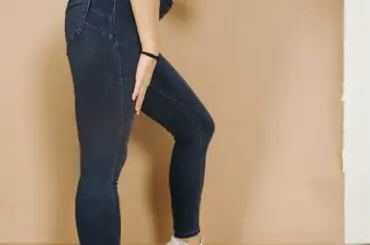Contents
How Tight Should a Belt Fit Men
You’re getting ready for a big day, picking out the perfect outfit to make a lasting impression. You’ve got the shirt, the pants, and the shoes, but there’s one accessory that often gets overlooked: the belt. How tight should a belt fit men? It might seem like a simple question, but the answer can make or break your outfit. In this comprehensive guide, we’ll dive deep into the world of belts, helping you find that sweet spot of belt tightness that ensures both style and comfort.
Understanding Belt Anatomy
Before we get into the nitty-gritty of belt tightness, let’s break down the basics of a belt’s anatomy. A typical belt consists of two main components: the buckle and the strap. The strap is the long part of the belt that wraps around your waist, while the buckle serves as the closure mechanism.
Types of Belts: First things first, you need to know that not all belts are created equal. Take, for instance, the classic dress belt. Picture yourself preparing for a sophisticated dinner party. Your sleek, leather dress belt is the perfect choice. It’s a symbol of timeless elegance, meant to complement your tailored suit or dress pants.
Now, on a casual weekend afternoon, you opt for a different belt. It’s broader, made of woven fabric, and has a stylish brass buckle. This is a casual belt, designed to hold up your jeans or chinos while adding a touch of flair to your relaxed outfit.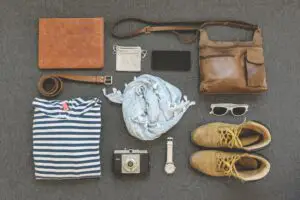
In a completely different scenario, if you’re heading to your workshop for a day of carpentry, you’re likely to choose a work belt. This belt is all about functionality and durability. It’s often made of thick, sturdy leather and designed to withstand the rigors of your trade, holding your tools and equipment securely in place.
Finally, fashion belts are all about making a statement. These belts come in various materials and styles, and the tightness can vary depending on the fashion statement you’re trying to make. Imagine a vibrant, patterned fabric belt adding a pop of color to your casual summer attire.
Materials Used in Belt Construction: Belts come in various materials, with leather, fabric, and synthetic materials being the most common. Each material has its own charm and purpose.
Picture a high-quality leather belt, made from genuine cowhide. It’s soft, yet sturdy, and ages beautifully over time. Your leather belt, when properly cared for, can last for years and develop a unique patina that tells the story of your journeys.
On the other hand, fabric belts offer versatility and comfort. They’re often made from materials like canvas or woven fibers. These belts are perfect for casual wear, as they provide a more relaxed fit compared to leather. Think about your favorite pair of khaki shorts paired with a canvas belt on a sunny day at the beach.
For those on a budget or looking for vegan-friendly options, synthetic belts are a great choice. These belts can mimic the look of leather or fabric while being more affordable and easy to clean. Imagine a stylish synthetic belt with a metallic buckle adding a modern touch to your outfit.
Determining Your Belt Size
Getting the right fit starts with knowing your belt size. You don’t want a belt that’s too tight, cutting into your waist, nor one that’s so loose it’s practically useless.
Measuring Your Waist: To find your belt size, measure your waist with a tape measure or use an existing belt that fits you well. Here’s a pro tip: measure around your waist at the point where you typically wear your belt. This will ensure an accurate fit.
Let’s say you’re measuring your waist for the first time, and you find that it’s 34 inches. This becomes your starting point for selecting the right belt size.
Understanding Belt Size Charts: Most brands provide belt size charts to help you make the right choice. These charts typically correlate waist measurements with recommended belt sizes.
For instance, if your waist measures 34 inches, the size chart might recommend a belt size of 36 inches. This is because belts are generally designed to be a bit longer than your actual waist size to allow for proper adjustment.
When to Size Up or Down: Sometimes, you might find yourself in between two sizes. In such cases, it’s generally better to size up rather than down. You can always add extra holes if needed. Imagine you’ve measured your waist at 35 inches. In this case, you’d opt for a size 36 belt. This way, you have room for adjustments and can still achieve the perfect fit.
The Goldilocks Zone
Now that you have the right size in mind, let’s talk about how tight your belt should be. Finding the Goldilocks zone of belt tightness can be a game-changer for your comfort and style.
The Rule of Thumb: Here’s a handy rule to remember – the one-finger rule and the two-finger rule. When you fasten your belt, you should be able to slip one or two fingers between the belt strap and your waist comfortably. This ensures that it’s snug but not too tight.
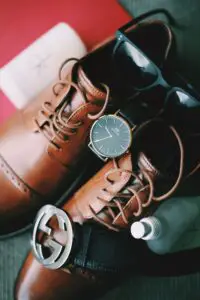
For example, if you’re wearing your leather dress belt with your tailored suit pants, you’ll aim for a snug but not constricting fit. Imagine fastening your belt and being able to comfortably slide two fingers between your waist and the belt. This allows for a bit of flexibility while ensuring your pants stay securely in place throughout the event.
The Role of Belt Loops: Pay attention to your pants’ belt loops. Your belt should sit comfortably within them without too much tension. If your belt constantly rides up or down, it might be too tight or too loose. Imagine your casual belt paired with your favorite pair of jeans. As you fasten it, make sure it sits snugly within the belt loops, allowing you to move freely without constantly adjusting it.
Balancing Comfort and Style: Remember, a belt is both a functional and style-oriented accessory. You want it to hold your pants up, but you also want it to enhance your overall look. Striking the right balance is key.
Consider a scenario where you’re attending a job interview. You’ve chosen a well-fitted suit and a sleek leather dress belt. As you fasten it, make sure it’s snug enough to create a polished, put-together appearance. However, it should never feel so tight that it becomes distracting during your conversation with the interviewer. The belt enhances your style without compromising your comfort.
Avoiding Overly Tight Belts: Belts that are excessively tight can cause discomfort and even health issues like acid reflux. It’s crucial to prioritize comfort alongside style.
Imagine you’re attending a formal gala, and you want to look your absolute best. You fasten your dress belt, but it feels uncomfortably tight around your waist. This not only distracts you throughout the evening but can also lead to digestive discomfort. Remember, a belt should enhance your confidence, not hinder your enjoyment.
Avoiding Too Loose Belts: On the flip side, belts that are too loose can look sloppy and fail to serve their purpose. They won’t hold your pants up effectively.
Imagine going for a hike in your trusty cargo pants with a work belt that’s too loose. Your pants start to sag, making the hike less enjoyable and practical. It’s essential to find the right balance between comfort and functionality.
Different Belt Styles and Tightness
Different occasions call for different belt styles and tightness levels. Let’s break it down by belt type:
Dress Belts: For formal occasions, your dress belt should be snug but not constricting. It complements your suit or dress pants and adds a touch of elegance.
Imagine you’re attending a black-tie wedding as the best man. Your crisp tuxedo requires a sleek dress belt. As you fasten it, ensure it’s snug enough to maintain a polished look throughout the ceremony and reception. A well-fitted dress belt enhances your overall appearance, allowing you to focus on your role in the wedding.
Casual Belts: Casual belts can be a bit more relaxed in terms of tightness. They’re ideal for everyday wear and should hold your jeans or chinos comfortably.
Picture a weekend brunch with friends. You’re sporting your favorite pair of jeans and a casual, button-down shirt. Your casual belt is the perfect addition to complete your look. As you fasten it, make sure it’s snug enough to keep your jeans in place while allowing you to enjoy your meal without feeling constricted.
Work Belts: Work belts need to be sturdy and secure, especially if you’re carrying tools or equipment. They should fit snugly to provide support throughout the day.
Imagine you’re a carpenter heading to a construction site. Your work belt is a crucial part of your gear, holding your tools and ensuring your safety. As you fasten it, make sure it’s snug enough to support the weight of your equipment without constantly shifting or causing discomfort. A well-fitted work belt allows you to focus on your tasks with confidence.
Fashion Belts: These belts often allow for more flexibility in tightness since they’re primarily about making a style statement.
Consider a scenario where you’re attending a music festival. Your outfit is eclectic and vibrant, reflecting the festival’s spirit. You opt for a fashion belt with intricate details and a bold buckle. As you fasten it, you have the freedom to adjust the tightness according to your comfort and style preferences. A fashion belt is all about expressing your individuality.
Belt Tightness and Occasion: Consider the event or setting when choosing your belt tightness. A wedding or job interview might require a different approach than a relaxed weekend outing.
For instance, if you’re going for a job interview, your choice of attire and belt is crucial. You want to make a professional impression. As you fasten your dress belt, ensure it’s snug but not constricting. This demonstrates your attention to detail and leaves a positive impression on the interviewer.
Tips for Belt Comfort
Comfort should always be a priority. Here are some tips to ensure your belt feels as good as it looks:
Selecting the Right Belt Type: Choose a belt that matches the occasion and your clothing style. Leather for formal, fabric for casual, and so on.
Let’s say you’re planning a summer picnic with friends. Your outfit choice is light and breezy, featuring shorts and a casual shirt. To complete the look, you opt for a fabric belt with a playful pattern. This choice not only enhances your comfort but also adds a touch of fun to your picnic attire.
Adjusting Your Belt Throughout the Day: Your waist can change size slightly throughout the day due to factors like eating and sitting. Don’t be afraid to adjust your belt as needed for comfort.
Imagine you’re at a family barbecue, indulging in delicious grilled treats. After a hearty meal, you might find your waistline has expanded slightly. To maintain comfort, feel free to adjust your belt by loosening it a notch or two. This simple adjustment ensures you can enjoy the festivities without feeling restricted.
Avoiding Belt-Related Health Issues: Overly tight belts can lead to digestive problems, so always prioritize your well-being.
Consider a day at the office where you have back-to-back meetings and presentations. You want to look sharp, but you also need to stay focused and comfortable. As you fasten your belt in the morning, make sure it’s snug but not overly tight. This prevents any discomfort or digestive issues during your busy workday.
Maintaining Your Belts
Once you’ve found the perfect belt and tightness level, you’ll want to make it last. Here’s how:
Proper Belt Storage: Hang your belts or store them flat to prevent creasing and maintain their shape.
Imagine you have a collection of belts for various occasions. Proper storage is essential to ensure they remain in top condition. By hanging your belts or laying them flat in a drawer, you prevent unsightly creases and prolong their lifespan.
Cleaning and Conditioning: Regularly clean and condition your leather belts to keep them looking their best.
Let’s say you have a favorite leather belt that’s been with you for years. To maintain its luster and longevity, it’s essential to clean and condition it periodically. This simple routine ensures your belt continues to enhance your style for many more occasions to come.
Belt Longevity: Quality belts can last for years with proper care, so invest in a good one.
Imagine you’re shopping for a new belt. You come across a high-quality leather belt that feels soft to the touch and exudes sophistication. While it might be a bit pricier than other options, investing in this belt is a wise choice. With the right care, it can serve as a reliable and stylish accessory for years to come.
Common Belt Fit Mistakes
Avoid these common belt fit mistakes to ensure you’re always looking your best:
Belt Buckle Misalignment: Make sure your belt buckle is centered and aligned with your pants’ fly.
Picture this scenario: you’re getting dressed for a formal dinner party, and you want to make a memorable entrance. Your dress belt is the finishing touch, but as you fasten it, you notice the buckle is off-center. This small detail can detract from your overall appearance. Take a moment to ensure your belt buckle aligns perfectly with your pants’ fly for a polished look.
Excessive Belt Tug: Belts should fit snugly but not so tight that they cause your pants to bunch up.
Imagine you’re attending a business conference, and you’re keen on making a professional impression. As you fasten your dress belt, be mindful of its tightness. If it’s too tight, it can create unsightly bunching around your waistline, which can be distracting and affect your confidence. Ensure your belt provides a secure fit without causing unnecessary tension.
Belt Creasing: Leather belts can develop unsightly creases if stored improperly or worn too tight for extended periods.
Let’s say you’ve chosen a luxurious leather belt to pair with your formal attire. After a long day at a wedding, you hang your belt improperly, causing it to crease. Over time, these creases can mar the belt’s appearance. To maintain its pristine look, store your leather belt correctly and avoid wearing it excessively tight.
Belt Sagging: On the other hand, belts that are too loose can cause your pants to sag, which is not a good look.
Imagine you’re enjoying a leisurely stroll in the park with friends, and you’re sporting your favorite pair of cargo pants. Your casual belt, however, is too loose, causing your pants to sag unattractively. This not only affects your appearance but also your comfort while walking. To prevent sagging, always choose the right belt tightness for your outfit.
Finding the Perfect Belt for Your Body Type
Everyone’s body is different, and finding the right belt for your body type can enhance your overall appearance:
Body Shapes and Belt Styles: Different body shapes benefit from different belt styles. A wider belt can help balance out a broader frame, while a slimmer belt can accentuate a trim waist.
Imagine you have a lean, athletic physique, and you’re getting ready for a casual date night. Your choice of attire includes slim-fit jeans and a fitted shirt. To emphasize your well-defined waist, opt for a slim belt. This accessory not only complements your body type but also adds a stylish touch to your outfit.
Proportionality and Belt Width: Consider your proportions when choosing belt width. You want it to be in harmony with your body.
Let’s say you have a tall, slender build, and you’re preparing for a family gathering. Your outfit of choice features classic chinos and a button-down shirt. To maintain proportionality and create a balanced look, go for a medium-width belt. This choice harmonizes with your physique and enhances your overall appearance.
Enhancing Your Look with a Belt: A well-chosen belt can elevate your outfit, drawing attention to your best features.
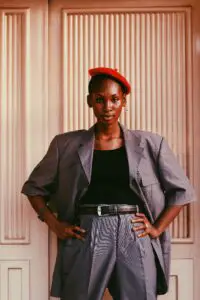
Imagine you’re attending a casual outdoor wedding with a beachfront setting. Your outfit includes linen pants and a crisp white shirt. To add a touch of sophistication and draw attention to your tailored waist, choose a braided leather belt. This accessory not only complements your attire but also enhances your presence at the event.
Belt Trends and Styles
Fashion is always evolving, and belts are no exception. Here’s a glimpse of current belt trends:
Current Belt Trends: From woven belts to statement buckles, explore the latest trends to stay fashion-forward.
Imagine you’re updating your wardrobe for the upcoming season. As you browse through the latest fashion trends, you come across woven belts with vibrant patterns. These belts have gained popularity for their unique textures and bold colors. Adding one to your collection allows you to stay on-trend while expressing your style.
Matching Belts with Outfits: Learn how to match your belt with your attire to create a polished look.
Consider a scenario where you’re preparing for a formal event, such as a gala dinner. Your choice of attire includes a classic black suit. To create a cohesive and sophisticated look, opt for a black leather dress belt with a sleek, understated buckle. This choice complements your outfit seamlessly, ensuring you make a memorable entrance.
Belt Accessories: Explore belt accessories like belt loops, keepers, and belt bags that can add flair to your outfit.

Imagine you’re planning a music festival weekend with friends. Your outfit is a mix of bohemian-inspired pieces, including loose-fitting pants and a flowy tunic. To enhance your festival look, you add a belt bag that complements your overall style. This accessory not only adds a practical touch but also enhances your festival ensemble.
Conclusion
In the world of men’s fashion, getting the tightness of your belt just right is the key to both comfort and style. Remember the one-finger or two-finger rule, and always consider the occasion and your body type. With the right belt, you can complete your look and make a statement without sacrificing comfort. So, the next time you fasten your belt, keep these tips in mind and step out with confidence, knowing you’ve found the perfect fit. Your style journey has never been so comfortable!

